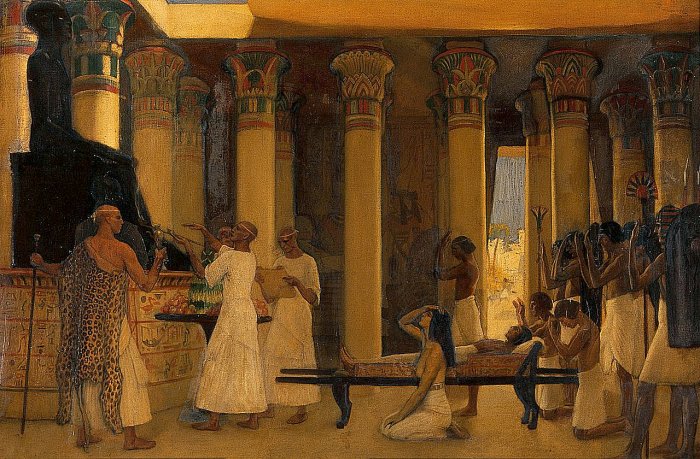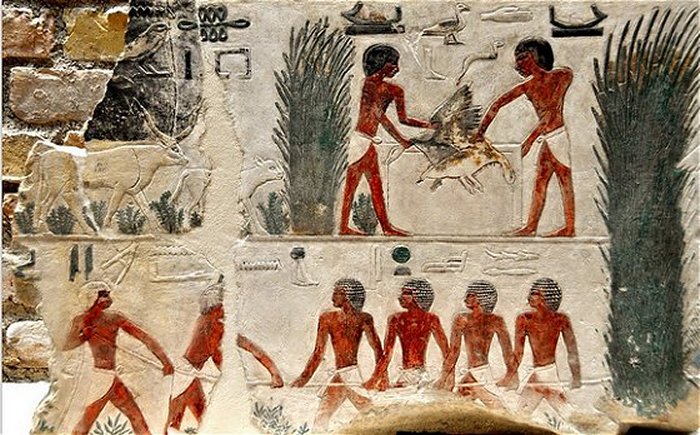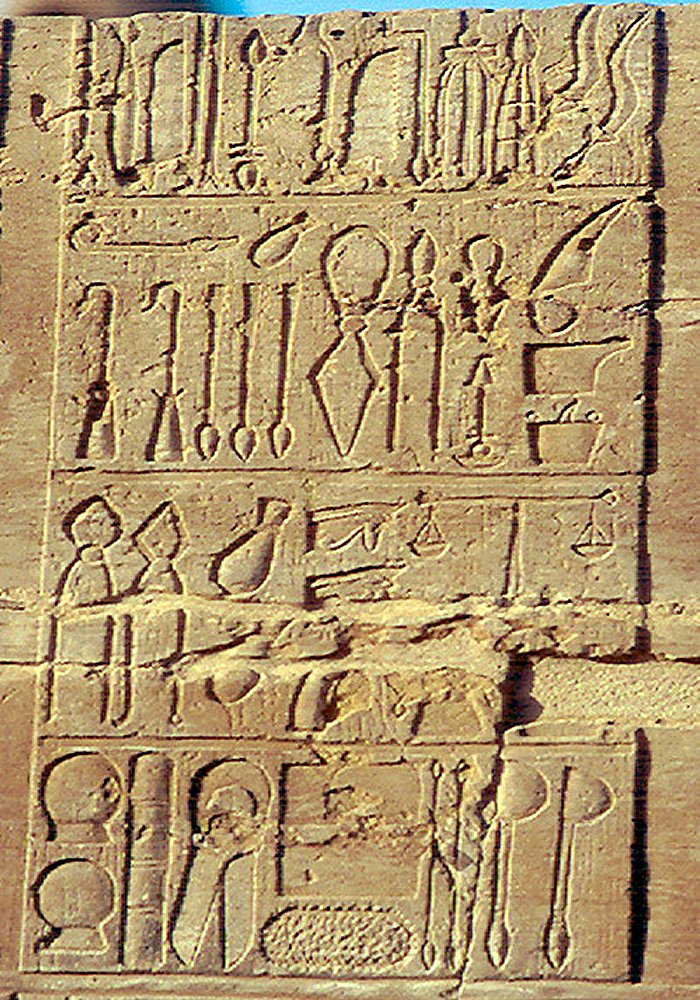Egyptians Mastered Medicine Thousands Of Years Ago
A. Sutherland - AncientPages.com - Civilization in Ancient Egypt means tombs, pyramids, and all aspects of human life. Prehistoric physicians in Egypt had an impressive knowledge of the human body, its inner workings, and the treatment of illness and disease.
An invocation to I-em-hetep, the Egyptian deity of medicine. Oil painting by Ernest Board. Image credit: wellcomecollection.org
Egyptian medical papyri documented many diagnostics and medical achievements we still use today.
The Egyptians' medicine reached a very high standard, spreading its reputation to neighboring countries.
Complementary medicine, like herbal medicine, played a key role in society. Ancient Egyptian scrolls document natural herbs and holistic medicine that saved lives and cured disease.
Proof comes from burial sites, tombs, and underground temples where archeologists have found extensive sets of medical documents and scrolls, including the Ebers Papyrus, the Edwin Smith Papyrus, the Hearst Papyrus, and the London Medical Papyrus, which contained the earliest documented awareness of tumors.
The Ebers Papyrus is the most famous plant-medicine "encyclopedia". It is a 110-page scroll that is about 20 meters long.
Egyptians consumed raw garlic and onions for endurance and to heal asthma and bronchial-pulmonary issues. Many of their herbs were steeped in wine and used as oral medicine.
These were natural herbs, untainted by pesticides, herbicides, insecticides, or fluoridated water.
The Egyptians documented using myrrh, frankincense, fennel, cassia, thyme, juniper, and aloe. Fresh garlic cloves were peeled, mashed, and macerated in vinegar and water and used as a rinse for sore throats and toothaches.
They knew about the healing powers of honey. The first official recognition of the importance of honey dates back to the first Egyptian Dynasty and the "Sealer of the Honey."
In Niuserre's Sun temple, beekeepers are shown in hieroglyphics blowing smoke into hives as they remove honeycombs.
Herbal medicine was mastered thousands of years ago.
Inscription detailing ancient Egyptian medical instruments, including bone saws, suction cups, knives and scalpels, retractors, scales, lances, chisels and dental tools.
Image credit: Jeff Dahl - CC BY-SA 2.5 DEED
The honey was immediately jarred and sealed and could, therefore, be kept for years, and it was used to produce medicines and ointments. They even used it as a natural antibiotic. The mainland for bee-keeping was in Lower Egypt, where extensive irrigation fed thousands of flowering plants. The bee was chosen as a symbol for the country, and the gods were associated with the bee.
One pharaoh's title was Bee King, and his Royal archers protected the bees like they were his holy temple. The temples were homes for the bees to satisfy the gods' desires.
Canaan was called the "Land of Milk and Honey" in the Hebrew tradition.
Egyptian medicine is some of the oldest ever documented. From the 33rd century BC until the Persian invasion in 525 BC, Egyptian medical practice remained consistent in its highly advanced methods for the time.
Homer even wrote in the Odyssey: "In Egypt, the men are more skilled in medicine than any of humankind," and "The Egyptians were skilled in medicine more than any other art."
The papyrus contains a "treatise on the heart," which recognizes the heart as the center of the blood supply, with vessels attached.
Even mental disorders, depression, and dementia were detailed in one of the chapters. The Egyptians were treating intestinal disease and parasites, eye and skin problems, abscesses, and tumors. Remedies from the ancient Ebers Papyrus scrolls:
o Aloe vera was used to alleviate burns, ulcers, skin diseases, and allergies
o Basil was written up as a heart medicine
o Balsam Apple (Apple of Jerusalem) was used as a laxative and as a liver stimulant
o Bayberry was prescribed for diarrhea, ulcers, and hemorrhoids
o Caraway soothed digestion and was a breath freshener
o Colchicum (citrullus colocynthus or meadow saffron) soothed rheumatism and reduced swelling
o Dill was recognized for laxative and diuretic properties
o Fenugreek was prescribed for respiratory disorders and to cleanse the stomach and calm the liver and pancreas
o frankincense was used for throat and larynx infections and to stop bleeding and vomiting
o garlic was given to the Hebrew enslaved people daily to give them vitality and strength for building the pyramids
o Licorice was utilized as a mild laxative to expel phlegm and alleviate chest and respiratory problems
o Onion was taken to prevent colds and to address cardiovascular problems (How did they know?)
o Parsley was prescribed as a diuretic
o thyme was given as a pain reliever and Tumeric for open wounds
o Poppy was used for relieving insomnia, as an anesthetic, and to deaden the pain
o Coriander was taken as a tea for urinary complaints, including cystitis
o Pomegranate root was strained with water and drunk to address "snakes of the belly" (tapeworms). The alkaloids contained in pomegranate paralyzed the worms' nervous system, and they relinquished their hold.
o Persian henna was used against hair loss. The disease was not uncommon in Ancient Egypt. There were many skin afflictions and parasites from the Nile River waters. Worms and tuberculosis were common, sometimes transmitted from cattle. Pneumonia struck people who breathed too much sand into their lungs during sand storms.
Updated on December 16, 2023
Copyright © AncientPages.com All rights reserved. This material may not be published, broadcast, rewritten or redistributed in whole or part without the express written permission of AncientPages.com
Expand for referencesSandison, A.T. "Diseases in Ancient Egypt"
More From Ancient Pages
-
 Battle Of Himera: New Study That Contradicts Historical Accounts
News | May 24, 2021
Battle Of Himera: New Study That Contradicts Historical Accounts
News | May 24, 2021 -
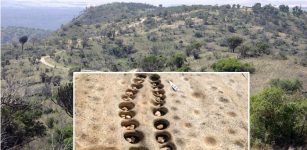 ‘Arcade’ Of Ancient Mancala Game Boards Carved On Rocks Found In Lewa Wildlife Conservancy, Kenya
Archaeology | Feb 2, 2024
‘Arcade’ Of Ancient Mancala Game Boards Carved On Rocks Found In Lewa Wildlife Conservancy, Kenya
Archaeology | Feb 2, 2024 -
 Inghirami Tomb – Spectacular Etruscan Burial With 53 Alabaster Urns In Ancient City Of Volterra, Italy
Featured Stories | Apr 19, 2021
Inghirami Tomb – Spectacular Etruscan Burial With 53 Alabaster Urns In Ancient City Of Volterra, Italy
Featured Stories | Apr 19, 2021 -
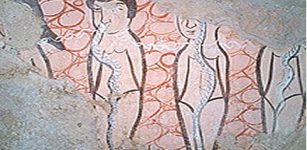 Ancient Monastery In The Middle Of ‘Syria’s Stonehenge’ – Underground Caves, Tombs, Stone Circles Older Than Pyramids
Civilizations | Nov 13, 2015
Ancient Monastery In The Middle Of ‘Syria’s Stonehenge’ – Underground Caves, Tombs, Stone Circles Older Than Pyramids
Civilizations | Nov 13, 2015 -
 Indigenous People Of Ancient Sicily Were Acrive Traders Long Before The Greeks Arrived
Archaeology | Sep 28, 2021
Indigenous People Of Ancient Sicily Were Acrive Traders Long Before The Greeks Arrived
Archaeology | Sep 28, 2021 -
 Mystery Of The Neanderthals – Search For Traces Of Neanderthals’ Lives And Hints Of Their Demise
Archaeology | Sep 26, 2022
Mystery Of The Neanderthals – Search For Traces Of Neanderthals’ Lives And Hints Of Their Demise
Archaeology | Sep 26, 2022 -
 Ancient ‘iPhone-Like’ Artifact Discovered At The Russian Atlantis
Archaeology | Sep 10, 2019
Ancient ‘iPhone-Like’ Artifact Discovered At The Russian Atlantis
Archaeology | Sep 10, 2019 -
 Ancient Tomb Of ‘Bird Oracle Markos’ Unearthed In Bergama (Pergamon), Turkey
Archaeology | Sep 6, 2022
Ancient Tomb Of ‘Bird Oracle Markos’ Unearthed In Bergama (Pergamon), Turkey
Archaeology | Sep 6, 2022 -
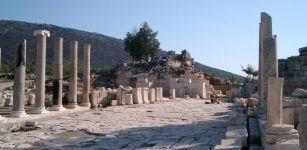 Reconstruction Of Five-Story Patara Lighthouse Built By Roman Emperor Nero – Begins
Archaeology | May 30, 2019
Reconstruction Of Five-Story Patara Lighthouse Built By Roman Emperor Nero – Begins
Archaeology | May 30, 2019 -
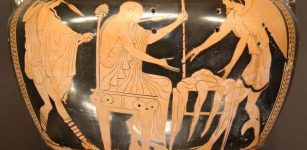 Prophet King Phineus Revealed The Future To Humans And Unleashed God Zeus’ Fury
Featured Stories | Nov 20, 2019
Prophet King Phineus Revealed The Future To Humans And Unleashed God Zeus’ Fury
Featured Stories | Nov 20, 2019 -
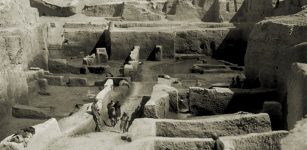 Iraq’s Ancient Kish City Survived The Great Flood – Today It’s Neglected And Lies Buried In Sand
Civilizations | Sep 24, 2015
Iraq’s Ancient Kish City Survived The Great Flood – Today It’s Neglected And Lies Buried In Sand
Civilizations | Sep 24, 2015 -
 Statues Of Serapis Sky God And Asclepios God Of Medicine Unearthed In Ancient City Of Kibyra
Artifacts | Nov 26, 2020
Statues Of Serapis Sky God And Asclepios God Of Medicine Unearthed In Ancient City Of Kibyra
Artifacts | Nov 26, 2020 -
 Dice Existed Long Before Recorded History And Were Not Always Perfect Cubes
Archaeology | Feb 1, 2018
Dice Existed Long Before Recorded History And Were Not Always Perfect Cubes
Archaeology | Feb 1, 2018 -
 The Faery Grail Of Hospitality And Accord – Secrets Of The Elucidation – Part 2
Ancient Mysteries | Sep 27, 2019
The Faery Grail Of Hospitality And Accord – Secrets Of The Elucidation – Part 2
Ancient Mysteries | Sep 27, 2019 -
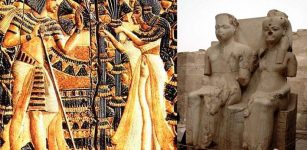 Ankhesenamun – Mysterious Death Of Tutankhamun’s Wife Ended The True Amarna Bloodline
Featured Stories | Mar 23, 2018
Ankhesenamun – Mysterious Death Of Tutankhamun’s Wife Ended The True Amarna Bloodline
Featured Stories | Mar 23, 2018 -
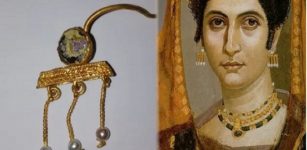 Gold Earring Found In Ruins Of Ancient Roman Colony Deultum In Bulgaria
Archaeology | Oct 11, 2020
Gold Earring Found In Ruins Of Ancient Roman Colony Deultum In Bulgaria
Archaeology | Oct 11, 2020 -
 Dunstanburgh Castle: Underground Passageways And The Legend Of Sir Guy The Seeker
Featured Stories | Apr 5, 2016
Dunstanburgh Castle: Underground Passageways And The Legend Of Sir Guy The Seeker
Featured Stories | Apr 5, 2016 -
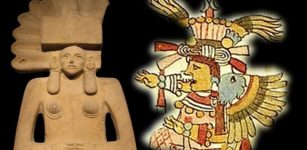 What Was An Aztec Confession?
Ancient History Facts | Jul 25, 2017
What Was An Aztec Confession?
Ancient History Facts | Jul 25, 2017 -
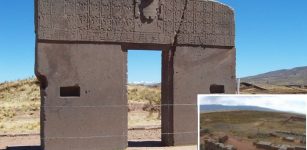 Underground City And Pyramid Discovered At Tiahuanaco, Bolivia
Archaeology | Aug 3, 2018
Underground City And Pyramid Discovered At Tiahuanaco, Bolivia
Archaeology | Aug 3, 2018 -
 Missing Piece Of A Linguistic Puzzle: Ancient DNA Identifies The Originators Of Indo-European Languages Spoken By 40% Of The World
DNA | Feb 12, 2025
Missing Piece Of A Linguistic Puzzle: Ancient DNA Identifies The Originators Of Indo-European Languages Spoken By 40% Of The World
DNA | Feb 12, 2025

